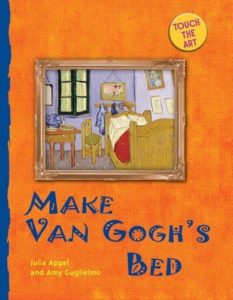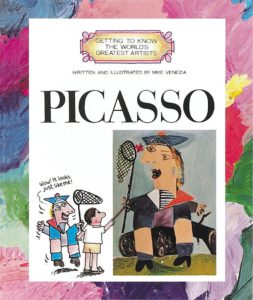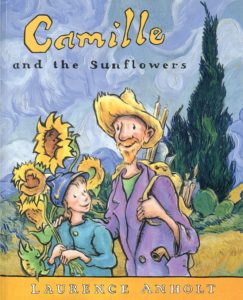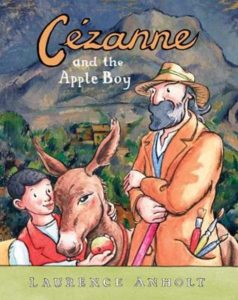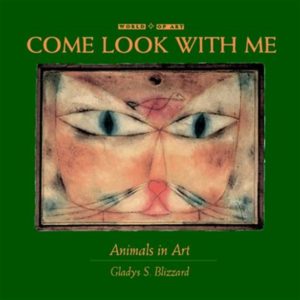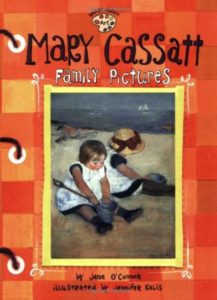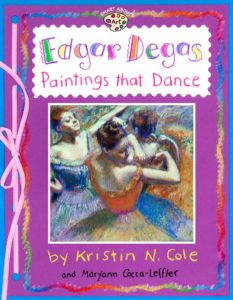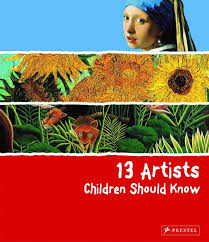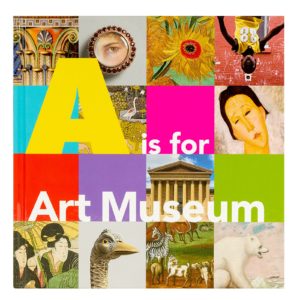 |
By Katy Friedland and Marla Shoemaker, A is for Art Museum (Temple University Press, 2008) is an interactive alphabet book based on full-color images of paintings, sculptures, prints, tapestries, and photos from the Philadelphia Museum of Art. D, for example, is for a Degas dancer; F (for Flowers) is paired with Van Gogh’s Sunflowers; M (for Music) with Picasso’s Three Musicians. For ages 3 and up. |
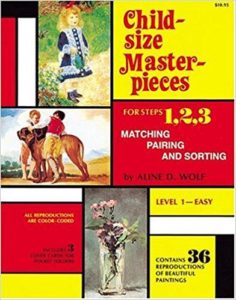 |
Aline Wolf’s Child Size Masterpieces (Parent Child Press, 2010) is an eight-book series in which kids use the included postcard-sized reproductions of famous paintings for a wide range of sorting, ordering, and matching exercises. Art appreciation for a range of ages. |
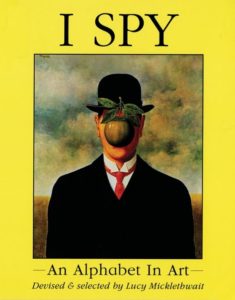 |
Lucy Micklethwait’s I Spy an Alphabet in Art (Greenwillow Books, 1996) leads readers through the alphabet with 26 famous paintings, using the childhood game “I spy with my little eye something beginning with A…” A, in this gorgeous book, is for the big green apple in Rene Magritte’s Son of Man; B for the ball in Henri Rousseau’s Football Players; V for the violin in Marc Chagall’s The Bride and Groom of the Eiffel Tower. A great interactive read for ages 4-8. |
|
Other books by Micklethwait in the same format include I Spy Shapes in Art, I Spy Colors in Art, and I Spy Animals in Art. |
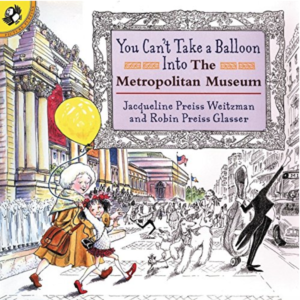 |
In Jacqueline Priess Weitzman’s wordless picture book You Can’t Take a Balloon Into the Metropolitan Museum (Puffin, 2001), a little girl and her grandmother visit the museum – but a museum guard forbids the girl to take her yellow balloon inside. The balloon is left tied to a railing, from which a pigeon sets it free. While the girl and her grandmother tour the museum – there are reproductions of 18 famous works of art – the museum guard dashes across the city, trying to retrieve the adventurous balloon. For ages 4-8. |
|
Also by Weitzman, see You Can’t Take a Balloon Into the National Gallery (Washington, DC; orange balloon) and You Can’t Take a Balloon Into the Museum of Fine Arts (Boston; green balloon). |
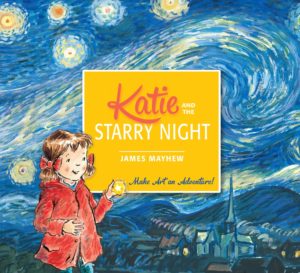 |
In James Mayhew’s Katie and the Starry Night (Hodder & Stoughton, 2013), young Katie, on a trip to the museum, explores six masterpieces by Vincent Van Gogh – first spilling the stars from Starry Night, then borrowing a chair, a ladder, and a fishing net from other paintings in order to catch and put them back again. For ages 4-8. |
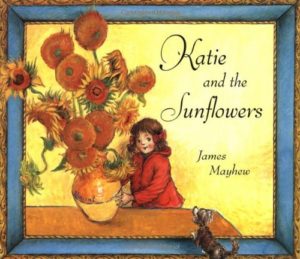 |
Other books in the same format in which Katie hops in and out of famous paintings include Katie and the Sunflowers, Katie Meets the Impressionists, Katie and the Spanish Princess, Katie and the Mona Lisa, Katie and the Waterlily Pond, and Katie’s Picture Show. |
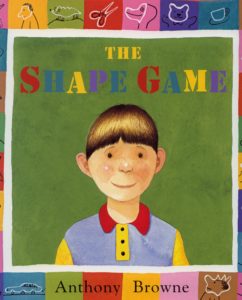 |
In Anthony Browne’s semi-autobiographical The Shape Game (Farrar, Straus & Giroux, 2003), young Anthony, with his parents and brother George, spends the day at the art museum. It’s a revelation to Anthony, though Dad remains stubbornly clueless. (“What on earth is that supposed to be?” asked Dad. “It’s supposed to be a mother and child,” said Mom. “Well, why isn’t it?” said Dad.) At the end, Mom teaches the boys to play the Shape Game – a clever drawing game – that’s irresistible for all ages. For ages 5-10. |
|
In the Shape Game, one player draws an abstract shape, another transforms it into a recognizable picture. Try it! |
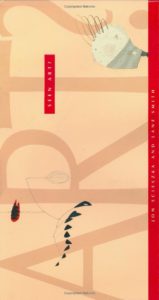 |
In Jon Scieszka’s Seen Art? (Viking, 2005), the narrator – looking for his friend Art – is mistakenly directed to New York City’s Museum of Modern Art, where he gets a tour of the collection. Great illustrations by Lane Smith. For ages 7 and up. |
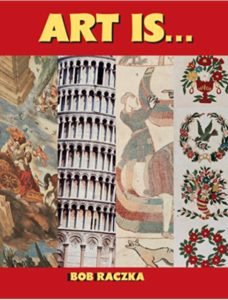 |
Bob Raczka’s Art Is… (Millbrook Press, 2003) uses a simple rhyming text to cover a large assortment of unusual styles of art, from a cave painting to a Tiffany lamp, a Greek vase, an African mask, a collage, and a Pollock painting. Included are 27 different works of art. For ages 5-10. |
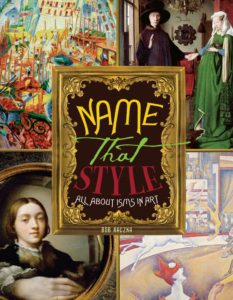 |
In Bob Raczka’s Name That Style (First Avenue Editions, 2009), the author explains – with great examples – the basics of 14 different art styles, among them naturalism, realism, cubism, impressionism, and surrealism.(The subtitle is “All About Isms in Art.”) For ages 10 and up. |
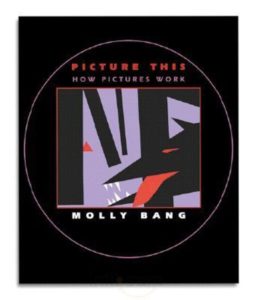 |
Artist Molly Bang’s Picture This: How Pictures Work (Chronicle Books, 2000) is a dissection of pictures and what makes them work, using as an example the story of Little Red Riding Hood. Find out how lines give depth, why diagonals are dramatic, and how size and shape impact mood. (And what about color? What’s the difference between a black and a lavender wolf?) A fascinating look at composition for artists of all ages. See an excerpt here. |
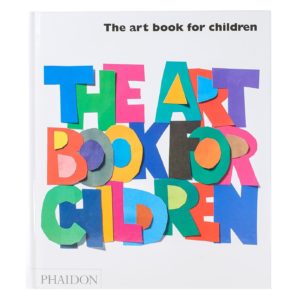 |
From the Editors of Phaidon Press, The Art Book for Children features 30 great artists and their most famous works, from Leonardo da Vinci to Andy Warhol, Cindy Sherman, and Donald Judd. The accompanying text encourages adults and kids to explore and discuss the paintings. For ages 7 and up. |
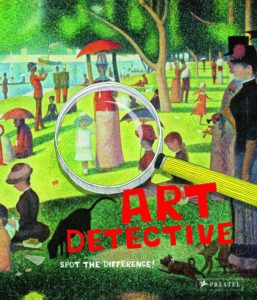 |
One of these things is not like the other! In Doris Kutschbach’s Art Detective: Spot the Difference (Prestel, 2013) famous paintings are paired with forgeries. Try to spot the differences, with some help from Charlie, an art-sleuth dog. For ages 7-11. |
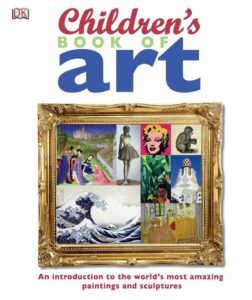 |
Dorling Kindersley’s gorgeously designed Children’s Book of Art (2009) is a 144-page tour of art history from prehistoric to modern times. Included is info on art styles and schools, famous works of art, and the lives of famous artists. The book is divided into three parts: Early Art (prehistoric times to 1850), Modern Art (Impressionism to the present), and Sculpture. For ages 8 and up. |
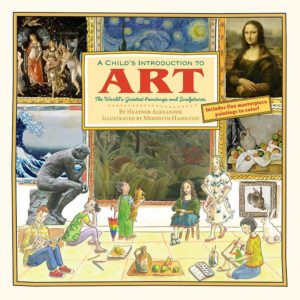 |
By Heather Alexander, the 96-page A Child’s Introduction to Art (Black Dog & Leventhal, 2014) is a charmer, with historical background, 40 featured artists, informational side boxes, and hands-on projects. For example, kids can try upside-down painting like Michelangelo, experiment with Q-tip pointillism, make a (tissue-paper) stained-glass window, and create a Pollock spatter-paint painting. For ages 9-12. |
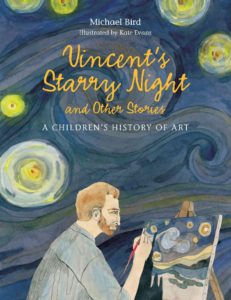 |
By Michael Bird, Vincent’s Starry Night and Other Stories (Laurence King, 2016) is an illustrated history of art told through stories, from the cave painters (“Lion Man”) to the present day. And, of course, through stories is the way we all learn best. For ages 8-12. |
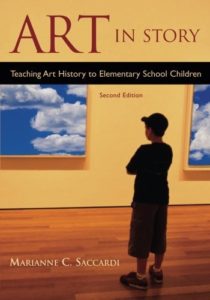 |
Marianne Saccardi’s Art in Story (Libraries Unlimited, 2006) is an art curriculum for elementary-level kids that variously covers prehistoric art; the art of the Middle East, ancient Greece, ancient Rome, Asia and Africa, the Middle Ages and the Renaissance; European Masters, Impressionists and Post-Impressionists; and the art of the Americas. Included are background information, stories, journal-writing and viewing suggestions, activities, and cross-curriculum connections. |
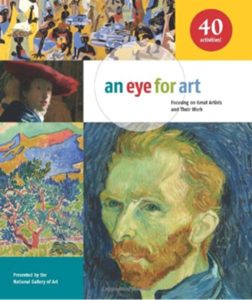 |
An Eye for Art (National Gallery of Art, 3013) is an introduction to over 50 famous artists and their works in themed chapters, variously covering nature, places, portraits, telling stories, everyday life, and questioning tradition. Included are a timeline, wonderful illustrations, and 40 hands-on activities. For ages 10 and up. |
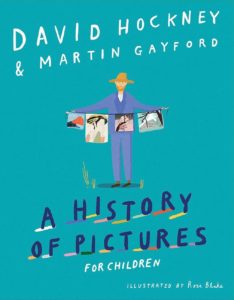 |
A History of Pictures for Children by David Hockney and Martin Gayford (Harry N. Abrams, 2018) covers art from cave paintings to computers, with interesting commentary and wonderful illustrations. For ages 10-14. |
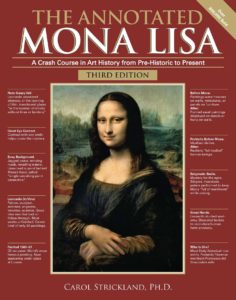 |
Carol Strickland’s The Annotated Mona Lisa (Andrews McMeel, 2018), subtitled “A Crash Course in Art History from Prehistoric to Present,” includes short essays, sidebars, factoids, and over 300 photographs. For ages 12 and up. |
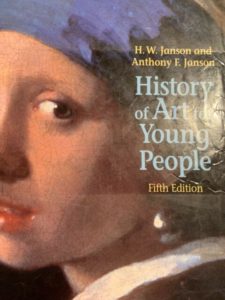 |
Anthony F. Janson’s The History of Art for Young People (Prentice Hall, 1997) is a time-honored classic, packed with information and illustrations. Recommended for grades 7-12. |
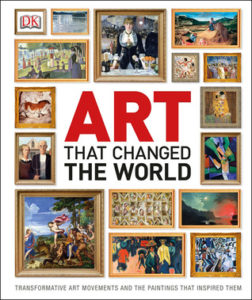 |
Art That Changed the World (DK, 2013) is a lavishly illustrated chronological overview of art, from ancient times to the present emphasizing key artworks and paintings that inspired major art movements. 400 pages; a good reference work for a wide range of ages. |
|
Famous Paintings is a collection of online art appreciation lesson for kids ages 8 and up. Each includes a biography of the artist, descriptions of his/her work, and images of paintings. |
|
From the Metropolitan Museum of Art, the Heilbrunn Timeline of Art History is an illustrated timeline of art and culture through images from the museum collection. |
